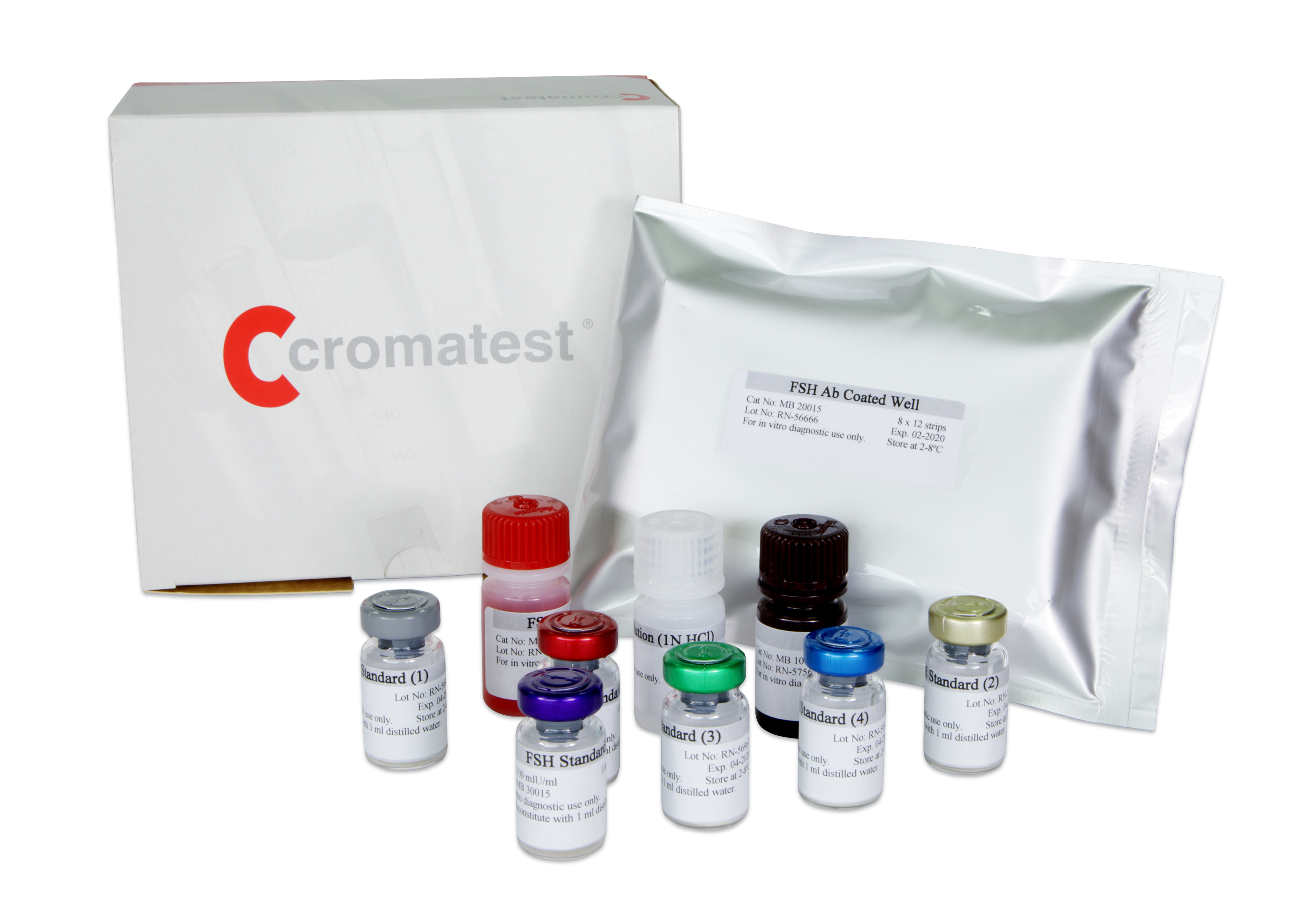

Cromatest
378 results
-

-

TSH EIA 96 Test 96 Tests
6107225 -

Latex particles (diameter ≥200 nm) coated with Calprotectin (CP) antibodies agglutinate when reacting with stool samples containing human calprotectin. The agglutination of latex particles is proportional to the concentration of calprotectin in the sample and can be measured by turbidimetry. The turbidimetric calprotectin is only a latex turbidimetric assay for the quantitative detection of calprotectin in stool samples. This assay is simple, widely applicable, and test results are obtained very quickly. The intended use of the test is exclusively to differentiate patients with inflammatory bowel diseases from patients with irritable bowel syndrome.
-

Free T3 EIA 96 Test 96 Tests
6107210 -

RF Turbidimetric 1x50 ml
KR31300 -

HbA1c Turbidimetric 1x45 ml
3156005The method uses the antigen-antibody reaction for the direct determination of hemoglobin A1c (HbA1c) in whole blood. Total hemoglobin and HbA1c compete for adsorption to latex particles (R1). Human anti-HbA1c monoclonal antibody (R2a) binds to the latex-HbA1c complex. The presence of goat anti-mouse IgG polyclonal antibody (R2b) causes the agglutination of latex particles (complexes). The amount of formed agglutination is proportional to the concentration of HbA1c in the sample and can be measured by turbidimetry.
-

HbA1c Turbidimetric 1x125 ml
KR31550The method uses the antigen-antibody reaction for the direct determination of hemoglobin A1c (HbA1c) in whole blood. Total hemoglobin and HbA1c compete for adsorption to latex particles (R1). Human anti-HbA1c monoclonal antibody (R2a) binds to the latex-HbA1c complex. The presence of goat anti-mouse IgG polyclonal antibody (R2b) causes the agglutination of latex particles (complexes). The amount of formed agglutination is proportional to the concentration of HbA1c in the sample and can be measured by turbidimetry.
-

HbA1c Turbidimetric 1x45 ml
CT33000The method uses the antigen-antibody reaction for the direct determination of hemoglobin A1c (HbA1c) in whole blood. Total hemoglobin and HbA1c compete for adsorption to latex particles (R1). Human anti-HbA1c monoclonal antibody (R2a) binds to the latex-HbA1c complex. The presence of goat anti-mouse IgG polyclonal antibody (R2b) causes the agglutination of latex particles (complexes). The amount of formed agglutination is proportional to the concentration of HbA1c in the sample and can be measured by turbidimetry.
-

-

-

-
